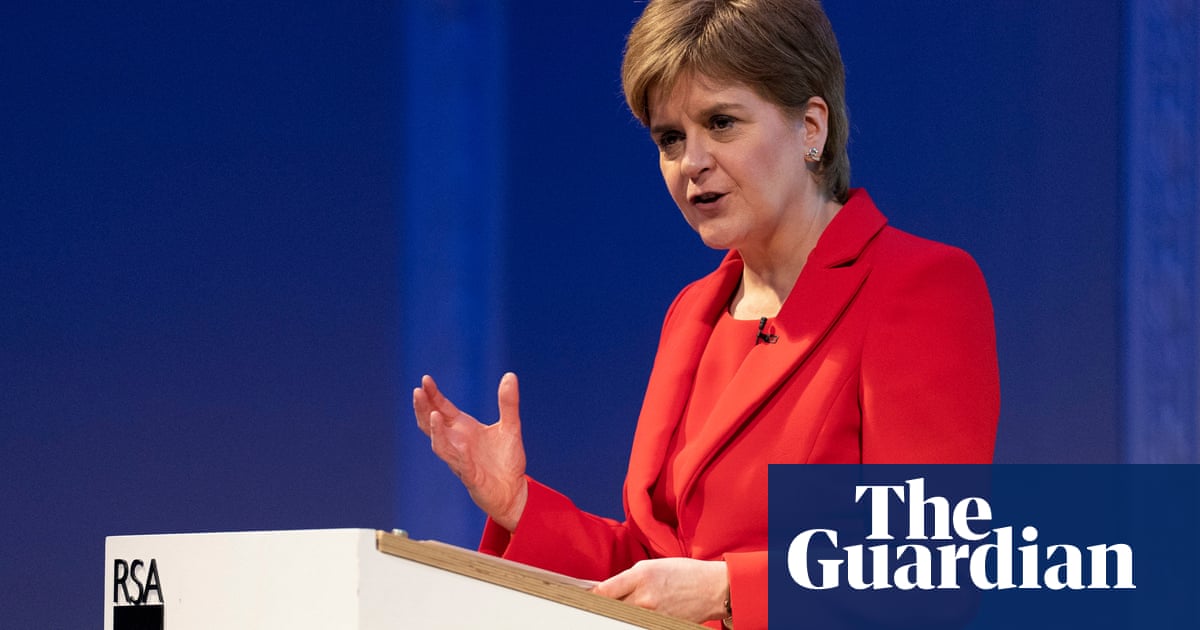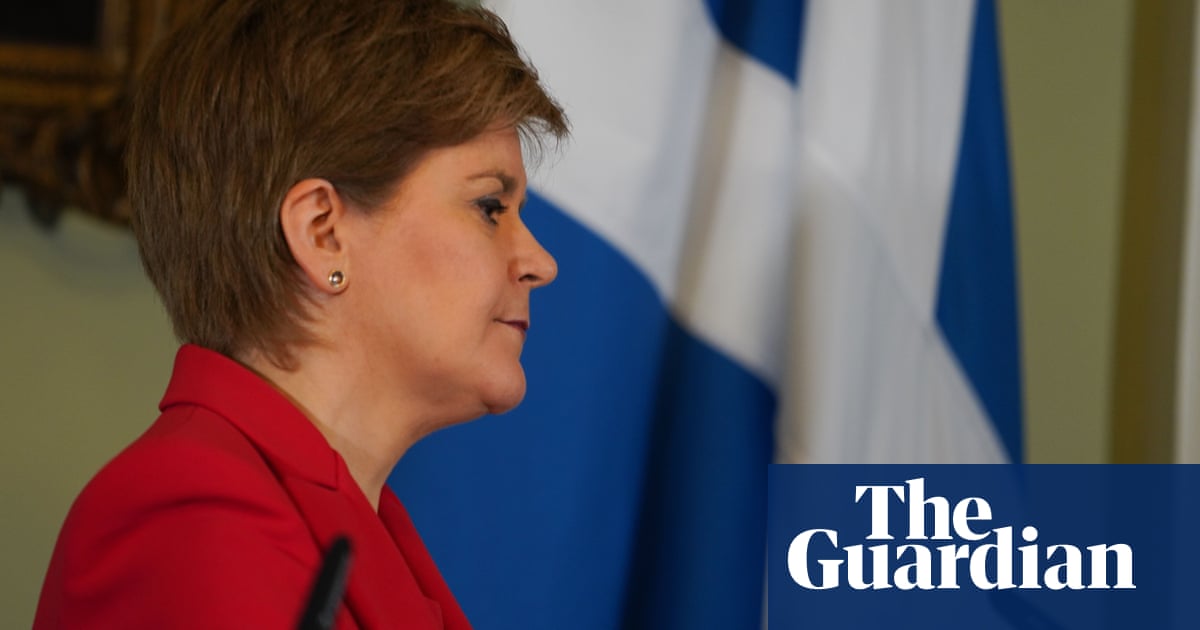
or a few days last week, the Conservative party allowed itself to think the impossible. With Nicola Sturgeon seemingly on the ropes over her evidence to the Holyrood inquiry, Tory MPs started to imagine a world where Boris Johnson’s most formidable opponent was no longer on the scene. One in which the threat of Scottish independence was receding.
MPs shared reports of a leak of the conclusion of the committee with excited emojis over WhatsApp. Whispers about a possible resignation followed. Ministers began to wonder whether the union was about to be saved through no actions of their own.
But it wasn’t to be. The reports are in and they make just as uncomfortable reading for the Tories as for the Scottish National party. While the Scottish parliament committee found that Sturgeon had misled the Scottish parliament over her dealings with Alex Salmond, it’s the other verdict that’s troubling Tories. James Hamilton QC’s independent inquiry cleared Sturgeon of breaching the ministerial code.
The clean bill of health has been read in various parts of the media as a complete vindication given that it was free of party politics, unlike the other inquiry. The Scottish Tories’ threat of a vote of no confidence in the first minister turned out to be a damp squib, with Sturgeon’s friends in parliament – the Greens – refusing to play along and Labour abstaining.
Down in Westminster, hopes of an SNP implosion are waning. “For a moment, it looked as though it might all go away by accident,” says a senior Tory. “Now we have to get back to making it go away through action.”
The threat of Scottish independence has long been the issue that most threatens Boris Johnson’s premiership. Were he to lose Scotland, Johnson would probably be done for. Should Sturgeon win a majority in May, she will push for the independence referendum Johnson dreads.
Work is under way on how to counter the threat. Thanks to recent events, Tories are less defeatist on the issue than last year, when polls showed a consistent rise in support for independence over the course of the pandemic.
This is down to two main factors. The first is vaccines, with the successful programme being widely viewed as a British project. It has also drawn some of the sting from the Brexit issue in Scotland. Would Sturgeon really want to talk about rejoining the EU at this moment? Tories point to how Scotland has vaccinated a greater percentage of its population than any EU country. Second, Sturgeon’s troubles: while things are now looking up for Sturgeon, the past few weeks have been bruising for the first minister and her party.
The civil war between Sturgeon and her predecessor Alex Salmond has proved a turn-off for the public. On the question of independence, the Conservative thinktank Onward commissioned two polls – one before Sturgeon gave evidence, the second after. The first found support for yes at 56%, the second found support at 53%. As for the election, recent polls suggest the SNP could fall just short of a majority.
But “just short” is not a party in freefall and SNP commentators are already predicting Sturgeon could come back stronger than ever. So, what is the UK government’s plan for countering the SNP and preventing indyref2?
Behind the scenes in Westminster, a shift in approach is under way. Following the departure of not one but two heads of the union unit in No 10 in recent weeks, the main strategic decisions are now being taken by a cabinet committee chaired by the prime minister on union strategy.
Rather than the Vote Leave approach – advocated by former union unit head Oliver Lewis – of a scorched-earth approach to the Scottish government, love-bombing Scots is the order of the day.
Johnson has moved from talking about a “once in a generation” referendum to an “irresponsible” referendum. The initial phrase in mind had been “reckless”, but focus group feedback suggested it could be seen as patronising.
The idea is that the government is not ruling out a referendum completely – instead saying that now, amid a pandemic, is not the time and place for one.
The reasons are twofold – by saying no full stop, you risk a backlash from voters who view it as a power grab and make it “safe” for voters who don’t want independence to back the SNP. Proposals by the SNP for a referendum by late 2023 if May’s election returns a majority of anti-union MSPs will test what time period counts as irresponsible.
In the meantime, work is under way on what can be done to strengthen emotional attachments to the UK. Research is taking place into what makes a person feel Scottish, Welsh, Northern Irish and British.
There’s also a new appetite to engage with the questions that independence raises – where before some in No 10 argued that to do so was to accept the premise that a referendum would happen. This includes what it means for the pound, currency and for families who would be split across the border.
Tory MPs anxious about the situation argue that the union needs to be put on the same footing as the government’s levelling-up agenda. “We need to treat it like levelling up – it has to be a guiding principle of this government’s agenda,” says one involved.
Will it work? While work is under way, there is a growing realisation in Westminster that some of this will be outside No 10’s control. “Scottish Labour has to do some of the heavy lifting,” says an aide. The election of Anas Sarwar is viewed as good news across the unionist spectrum.
Ministers have long been horrified at the prospect of any independence referendum while both Boris Johnson and Nicola Sturgeon are in place. “Wait for Rishi,” was the message from MPs – given the chancellor’s high approval ratings in Scotland. Johnson’s unpopularity compared to Sturgeon’s popularity was viewed as too toxic a combination to consider any such vote.
It’s still the case that no one relishes the prospect. But recent events have boosted unionists and brought clearer thinking on how to fight it if they have to. Whatever May’s election brings, No 10 is getting battle ready.
Katy Balls is the Spectator’s deputy political editor












